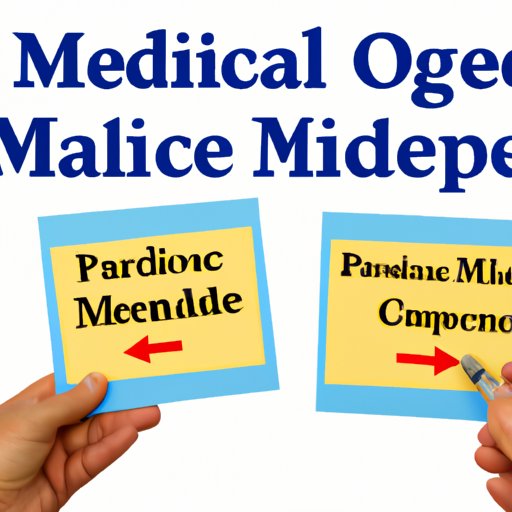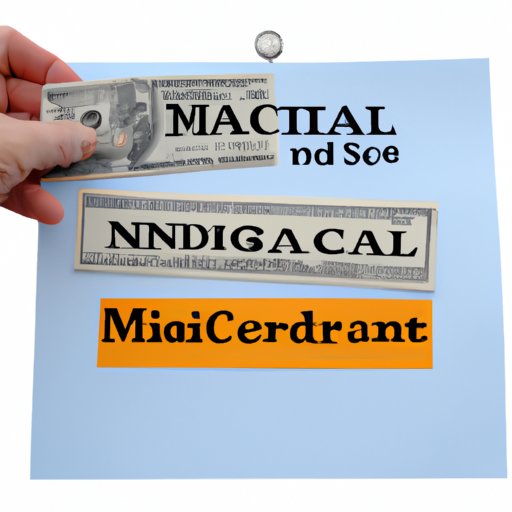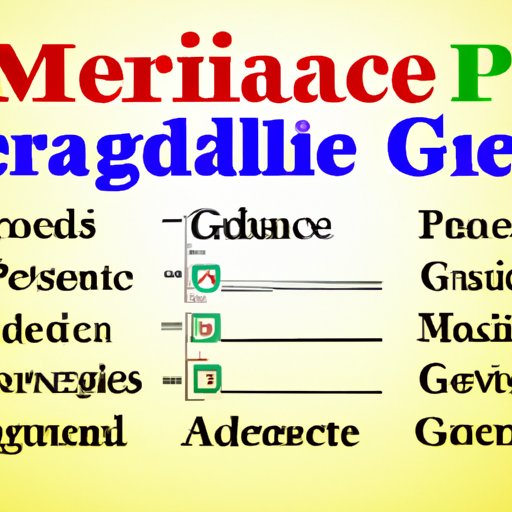Introduction
Traditional Medicare is a type of health insurance offered by the federal government to people aged 65 and over, as well as some younger individuals with certain disabilities. It is administered by the Centers for Medicare & Medicaid Services (CMS), a branch of the Department of Health and Human Services (HHS).
Definition of Traditional Medicare
Traditional Medicare consists of two parts: Part A and Part B. Part A covers inpatient care, such as hospital stays, skilled nursing facility stays, and hospice care. Part B covers outpatient care, such as doctor visits, preventive care, durable medical equipment, and laboratory tests. Some services, such as physical therapy, are covered under both parts.

Overview of How it Works
Traditional Medicare is funded through payroll taxes, premiums, and other sources. Beneficiaries pay a monthly premium for Part B coverage, and may also have to pay copayments or coinsurance for some services. Beneficiaries can choose to receive their coverage directly from Medicare, or they can purchase a Medicare Advantage plan, which offers additional coverage but may require additional costs.

Comparing Traditional Medicare to Other Types of Coverage
When considering health insurance options, it is important to compare traditional Medicare to other types of coverage. Traditional Medicare offers a number of advantages, including lower premiums and more comprehensive coverage than many private plans. However, there are also disadvantages, such as higher out-of-pocket costs and fewer provider choices.
Advantages and Disadvantages
One advantage of traditional Medicare is that it covers a wide range of services and procedures. According to the Kaiser Family Foundation, “Medicare covers most medically necessary services, including hospitalizations, doctor visits, lab tests, and preventive services.” This means that beneficiaries do not have to worry about whether or not a particular service will be covered; if it is medically necessary, it is likely to be covered.
In addition, traditional Medicare has lower premiums than many private plans. The average monthly premium for Part B coverage in 2020 was $144.60, compared to an average of $388 per month for private plans, according to the Kaiser Family Foundation.
On the downside, traditional Medicare does not cover all services, such as long-term care or dental care. In addition, beneficiaries may have to pay higher out-of-pocket costs, such as copayments or coinsurance. Finally, beneficiaries may have fewer provider choices than those who opt for private plans.
Cost Comparison
It is important to consider the cost of traditional Medicare when making a decision about health insurance. The cost of traditional Medicare varies depending on a number of factors, such as the beneficiary’s income and assets, the type of coverage chosen, and the amount of services used. Generally speaking, traditional Medicare is less expensive than private plans.
According to a study published in the journal Health Affairs, “The average Medicare enrollee spent $5,244 in 2013, compared to $12,073 for those enrolled in employer-sponsored health plans.” This difference is due in part to the fact that traditional Medicare does not include premiums for coverage, while private plans typically do.
Examining the Benefits and Drawbacks of Traditional Medicare
When deciding whether traditional Medicare is right for you, it is important to consider the benefits and drawbacks of the program. Here is a closer look at some of the key benefits and drawbacks of traditional Medicare.
Coverage Options
Traditional Medicare offers a wide range of coverage options, including hospitalization, doctor visits, preventive care, and durable medical equipment. Beneficiaries can also choose to add additional coverage, such as prescription drug coverage or a Medigap policy.
Cost Considerations
Traditional Medicare is generally less expensive than private plans, but out-of-pocket costs can still add up. Beneficiaries should consider their income and assets, as well as the type of coverage they choose, when calculating the cost of traditional Medicare.
Eligibility Requirements
To be eligible for traditional Medicare, a person must be at least 65 years old or have certain disabilities. In addition, the individual must be a U.S. citizen or legal resident and meet certain income and asset requirements.

Understanding the Cost of Traditional Medicare
The cost of traditional Medicare depends on several factors, including the type of coverage chosen, the amount of services used, and the beneficiary’s income and assets. Here is a closer look at some of the factors that can affect the cost of traditional Medicare.
Factors Affecting Costs
The cost of traditional Medicare depends on the type of coverage chosen and the amount of services used. For example, if a beneficiary chooses a Medicare Advantage plan, they may have to pay a monthly premium in addition to the Part B premium. In addition, beneficiaries may have to pay copayments or coinsurance for some services.
Cost-Saving Measures
Fortunately, there are a number of cost-saving measures available to help reduce the cost of traditional Medicare. For example, the Medicare Savings Program can help low-income beneficiaries pay for premiums, deductibles, and copayments. In addition, beneficiaries can take advantage of discounts on prescription drugs and other services.
Investigating Eligibility Requirements for Traditional Medicare
In order to be eligible for traditional Medicare, an individual must meet certain criteria. Here is a closer look at the age, income, and asset requirements for traditional Medicare.
Age Requirements
In order to be eligible for traditional Medicare, an individual must be at least 65 years old. However, some younger individuals may also be eligible if they have certain disabilities or conditions.
Income and Asset Requirements
In addition to meeting the age requirement, beneficiaries must also meet certain income and asset requirements. According to the Social Security Administration, beneficiaries must have an annual income of less than $18,735 for an individual or $25,365 for a married couple. Beneficiaries must also have assets of less than $2,000 for an individual or $3,000 for a married couple.
Investigating Additional Coverage Options Available with Traditional Medicare
In addition to traditional Medicare, beneficiaries can choose to add additional coverage, such as Medigap insurance, Medicare Advantage plans, or prescription drug coverage. Here is a closer look at these additional coverage options.
Medigap Insurance
Medigap insurance is a type of supplemental insurance that helps cover out-of-pocket costs, such as copayments and coinsurance. Medigap policies are offered by private insurance companies and can help reduce the financial burden of traditional Medicare.
Medicare Advantage Plans
Medicare Advantage plans are offered by private insurance companies and provide additional coverage, such as vision and dental care, beyond what is offered by traditional Medicare. These plans may require additional premiums and may also limit the choice of providers.
Prescription Drug Coverage
Prescription drug coverage is available through traditional Medicare, Medicare Advantage plans, and stand-alone plans. Beneficiaries should carefully compare plans to determine which one is best for them.
Conclusion
Traditional Medicare is a type of health insurance offered by the federal government to people aged 65 and over, as well as some younger individuals with certain disabilities. It offers a wide range of coverage options, including hospitalization, doctor visits, preventive care, and durable medical equipment. The cost of traditional Medicare varies depending on a number of factors, including the type of coverage chosen and the amount of services used. In addition, beneficiaries must meet certain age, income, and asset requirements to be eligible for traditional Medicare. Finally, beneficiaries can choose to add additional coverage, such as Medigap insurance, Medicare Advantage plans, or prescription drug coverage.
It is important to carefully research and compare traditional Medicare and other types of coverage before making a decision. By understanding the benefits and drawbacks of traditional Medicare, beneficiaries can make an informed decision about their health insurance.
(Note: Is this article not meeting your expectations? Do you have knowledge or insights to share? Unlock new opportunities and expand your reach by joining our authors team. Click Registration to join us and share your expertise with our readers.)
